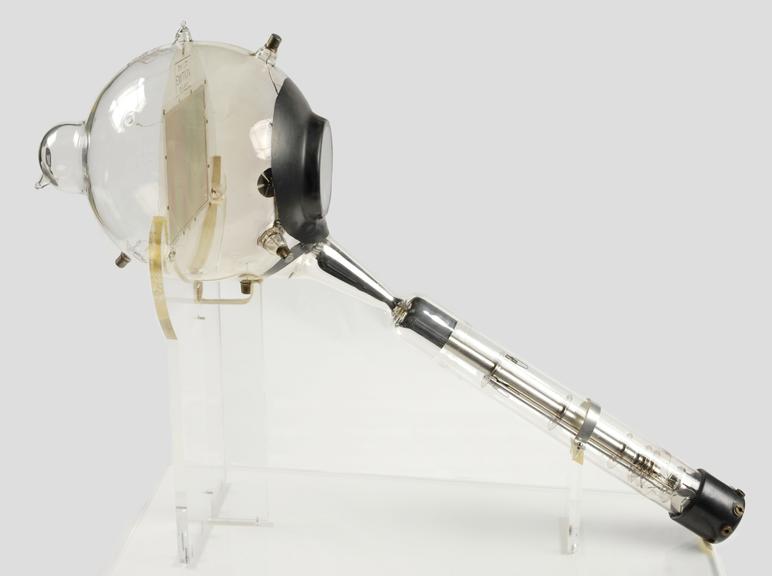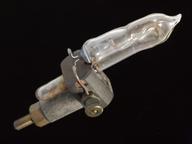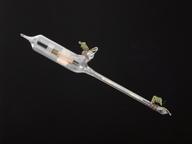


Emitron tube for television camera.
An Emitron camera tube made by Electric and Musical Industries Limited, c. 1934, in Britain.
The ‘Emitron’ camera tube was a cathode ray tube, which used an electron beam to convert light from the scene in the studio into a television signal.
Emitron tubes were made by EMI (Electrical & Music Industries), based on experimental work by their engineers William Tedham and James McGee. The first prototype Emitron camera tubes were produced in January 1934.
When the world's first regular high-definition television service began broadcasting from Alexandra Palace in London in 1936, the cameras in the studios used the Emitron tube.
Details
- Category:
- Radio Communication
- Object Number:
- 1939-199
- Materials:
- glass and white metal (unknown)
- Measurements:
-
overall: 360 mm x 200 mm x 580 mm, 1kg
on stand: 438 mm x 570 mm x 215 mm, 180 mm,
- type:
- cathode ray tube
- credit:
- Electric and Musical Industries Limited (EMI)




